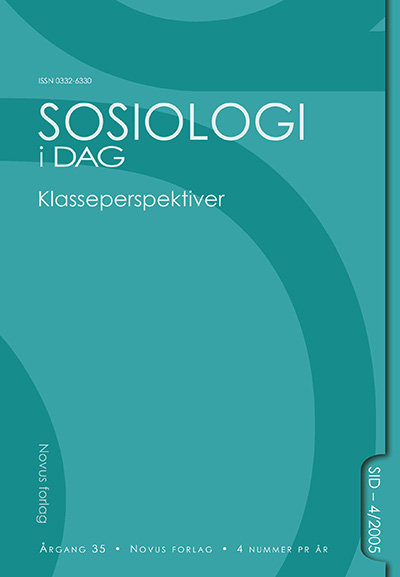Abstract
Abstract
The focus of this article is class and power relations in the Norwegian labour market from 1920 to 2002/3. Three set of questions related to shifts in the class structure are addressed: 1) the class composition and structure of the labour force, 2) the organization of work and the power of employees, and 3) the relevance of gender and sector. The Norwegian working class is numerically at its peak in the 1960s and 1970s. We can observe an increase in the proportions of higher and intermediate white collar employees and a decrease in the working class after 1982. The decrease in the working class after 1982 is more dramatic if we use work autonomy (Wright's power model) and less profound if we relate it to subordinate low skill jobs (Wright's exploitation model). Women are still over-represented in subordinate positions, but a significant higher proportion of women are currently managers or supervisors. The percentages of managers/supervisors increase in both the private and public sector after 1982. Our data does not lend support to the idea that public sector work is less hierarchically organized. The article is based on census data from 1920-1970, survey data from 1982 and 1995/6 (Wright project), and the European Social Survey 2002/3. The data allows us to give a more comprehensive picture of changes in the Norwegian class structure than previous research.
Keywords: Class analysis, organization of work, social structure, hierarchy, gender, post industrial stratification
Authors who publish with this journal agree to the following terms:
Â
- Authors retain copyright and grant the journal right of first publication, with the work 1 year after publication simultaneously licensed under a Creative Commons Attribution License that allows others to share the work with an acknowledgement of the work's authorship and initial publication in this journal.
- Authors are able to enter into separate, additional contractual arrangements for the non-exclusive distribution of the journal's published version of the work (e.g., post it to an institutional repository or publish it in a book), with an acknowledgement of its initial publication in this journal.
